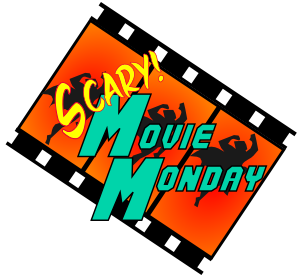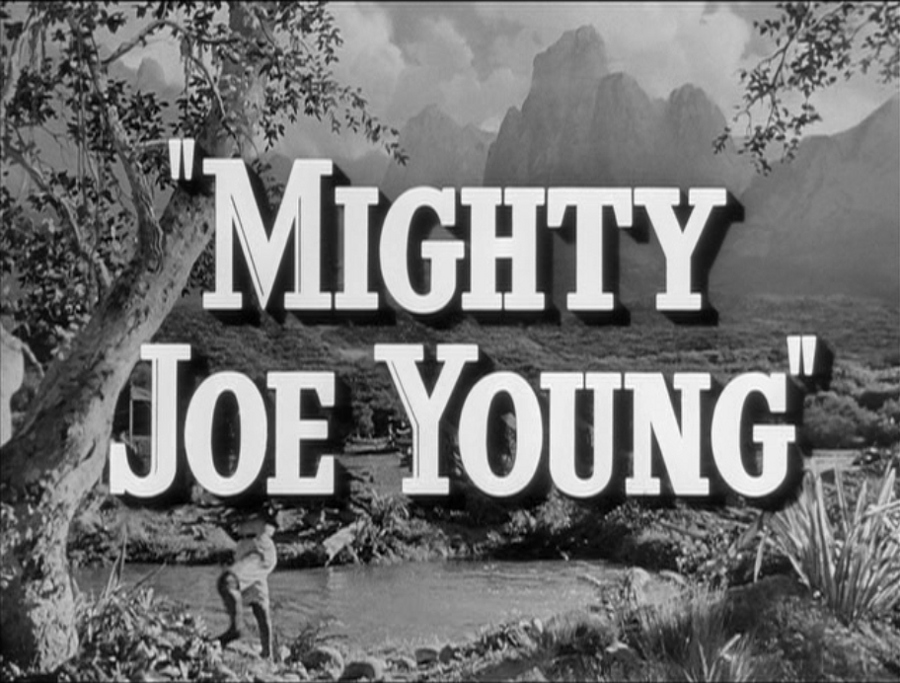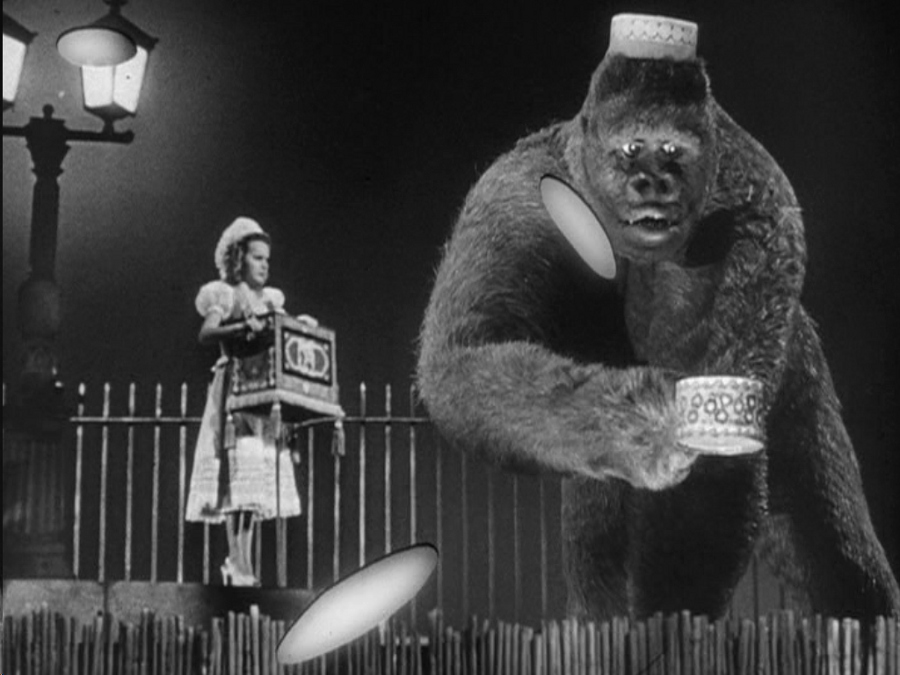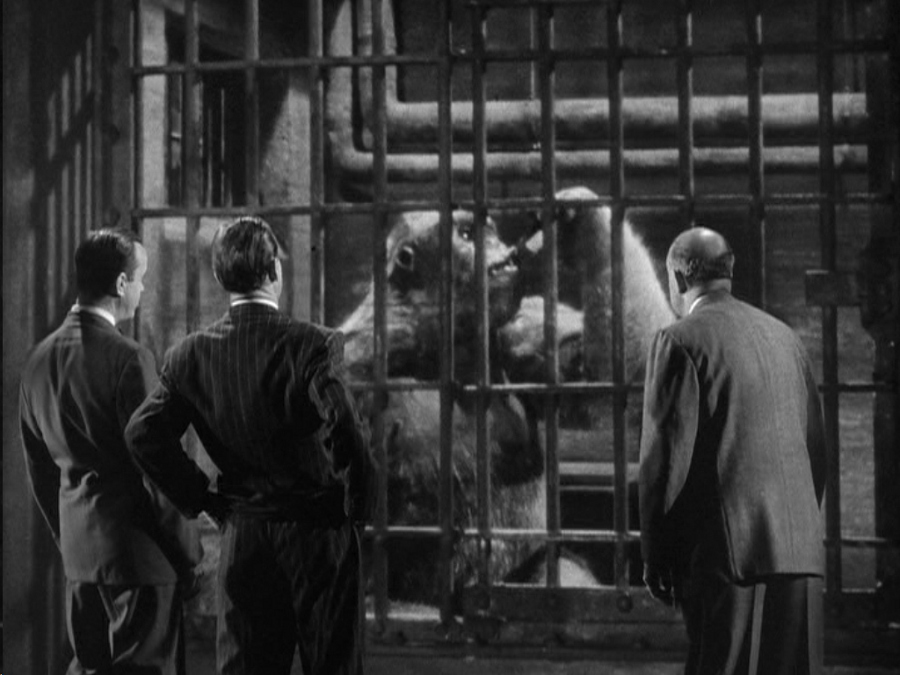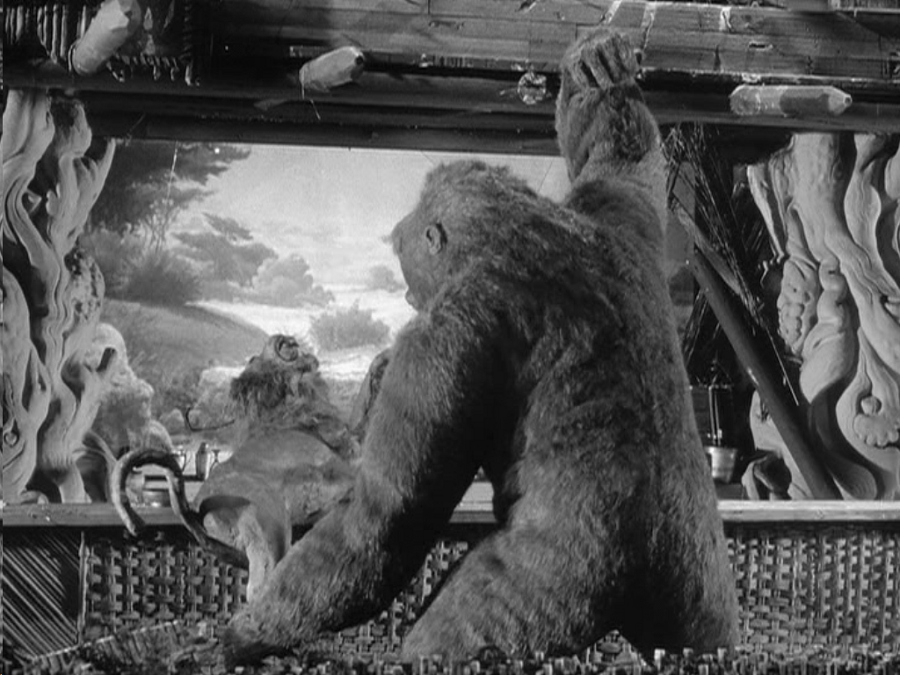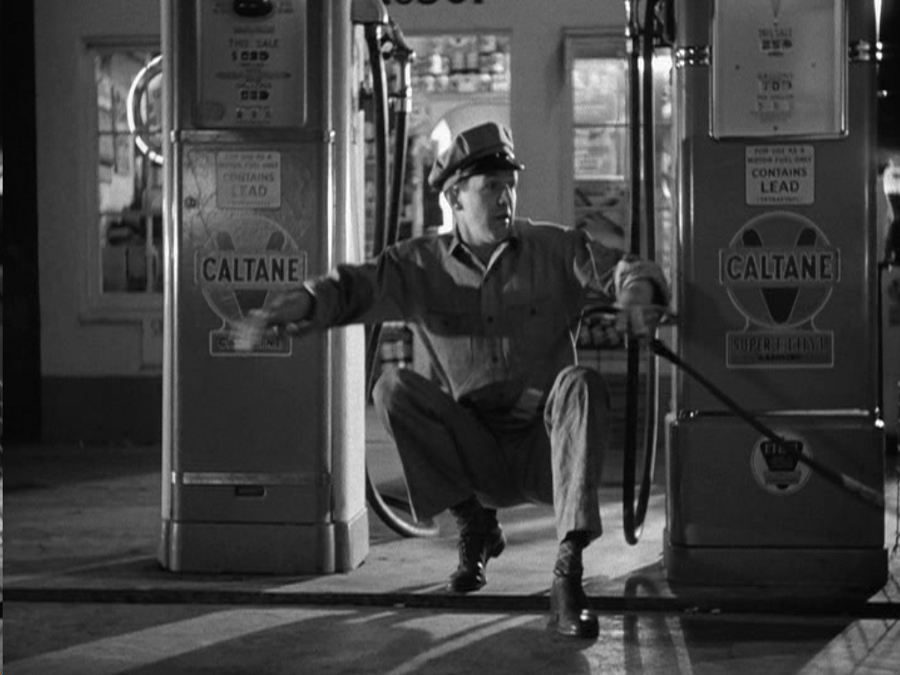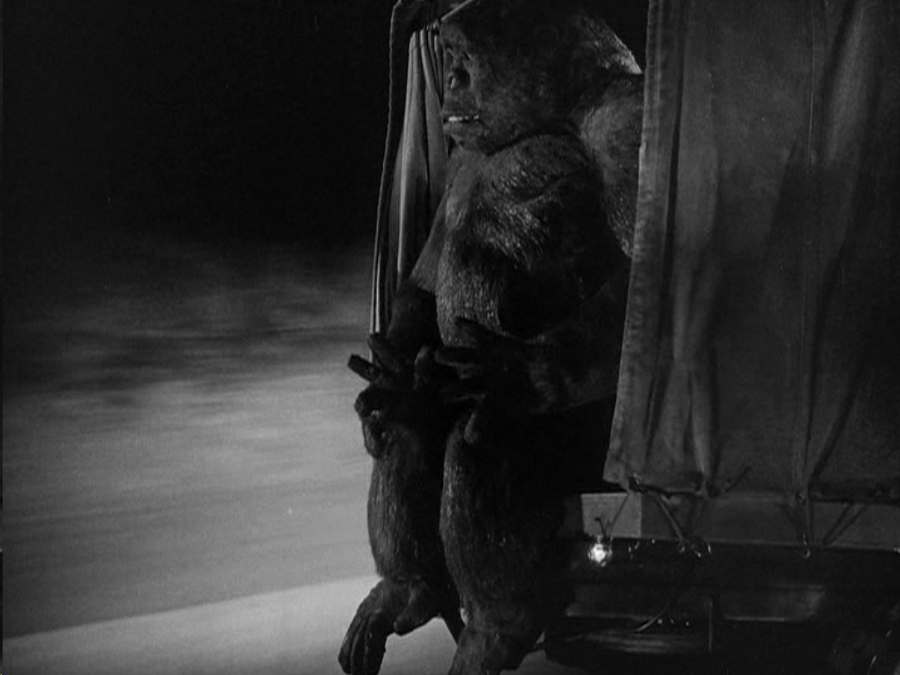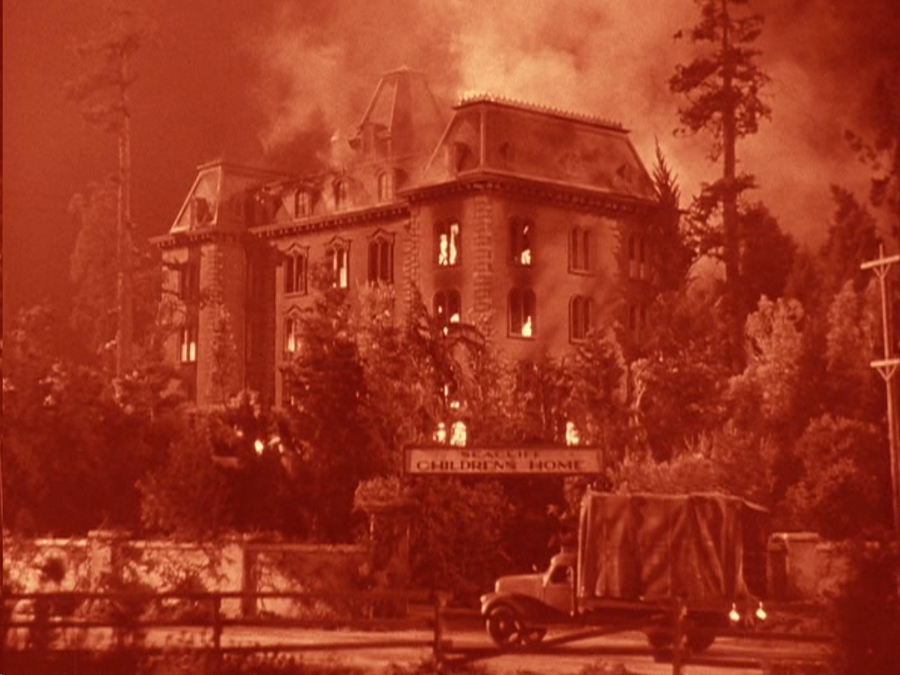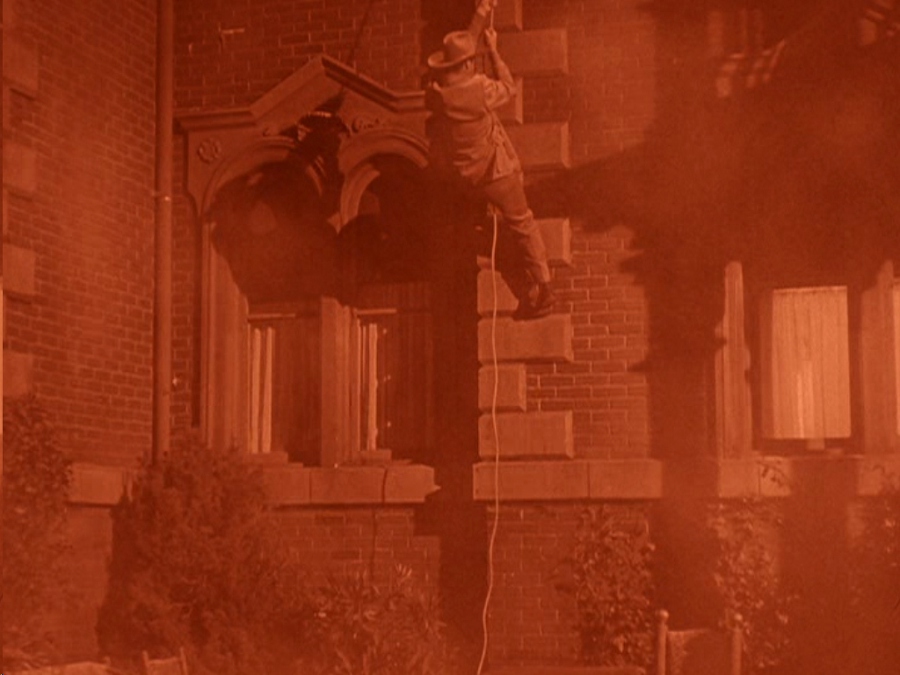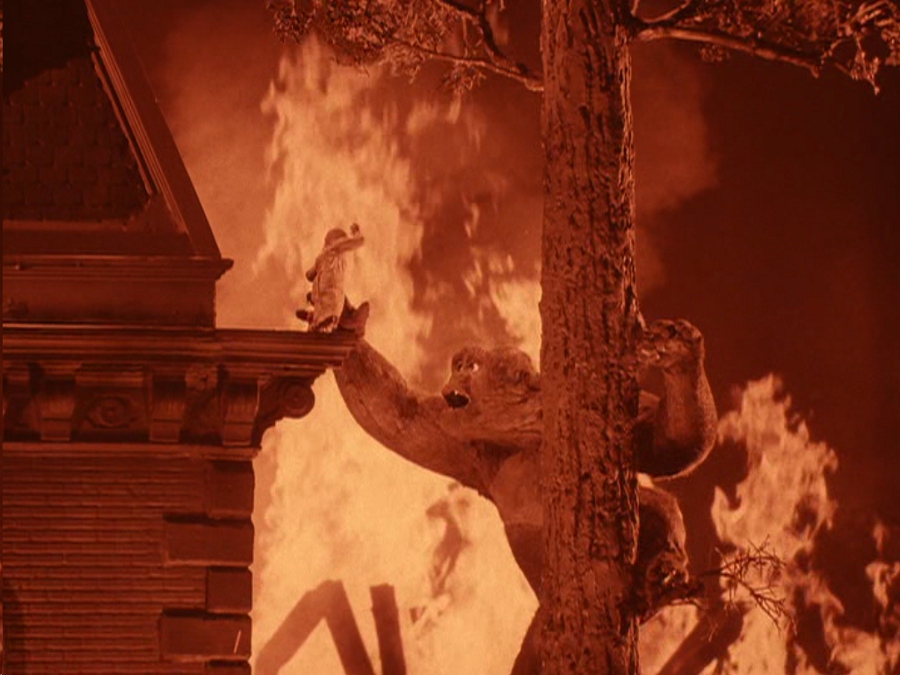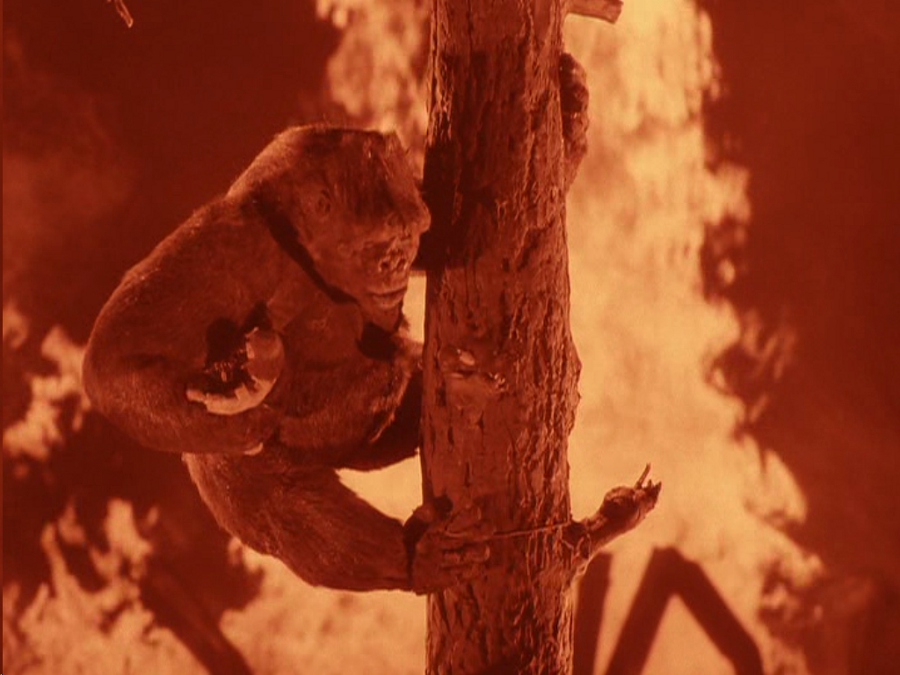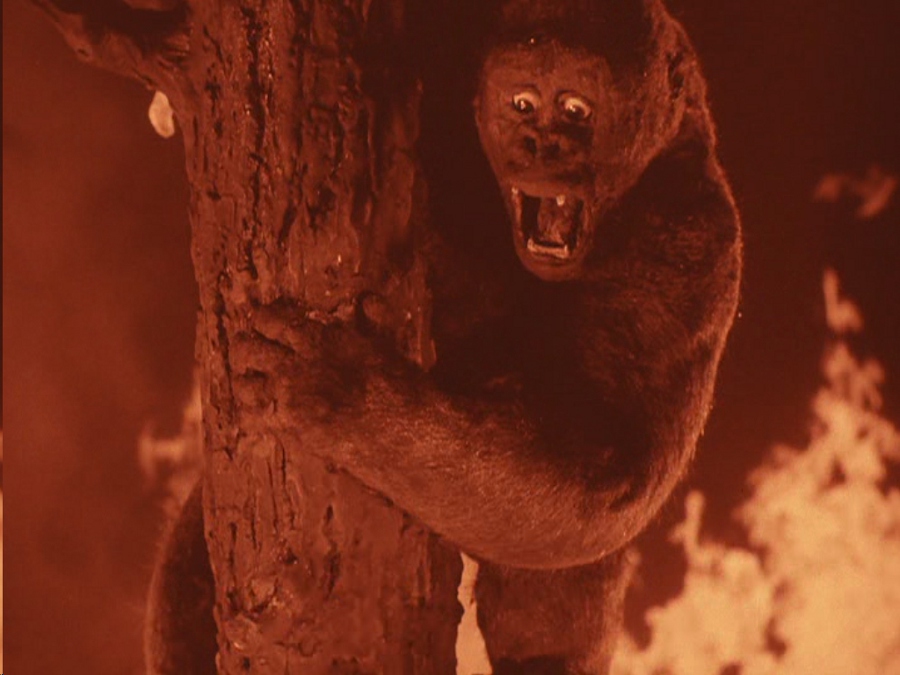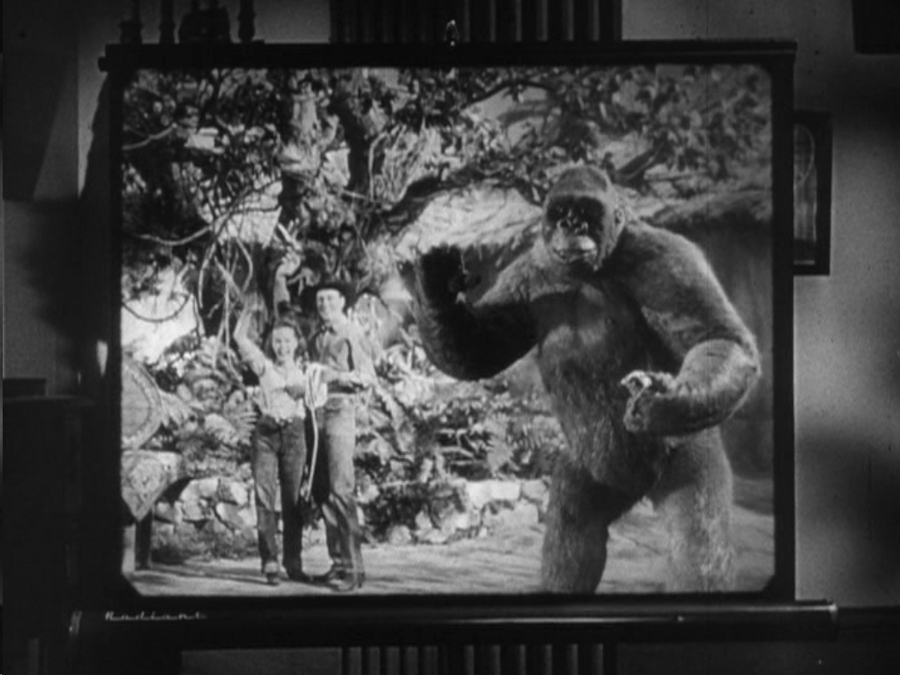Continuing our look back at 1949’s Mighty Joe Young, featuring effects supervised by the great Willis O’Brien and early stop-motion animation by Ray Harryhausen.
One thing that is really striking while rewatching it on DVD is just how sloppy the effects are. I never noticed before, because I had only ever seen it on standard broadcast TV, and the picture quality was pretty poor. Also, you would see it once and then it would be gone for months. There was no stopping and rewatching and freeze-framing in digital clarity. Watching it this way, you can see every stray shadow, every reflection on the back glass, every support wire (and there are a lot), every wobble in the rear projection.
So when we left off last week, giant gorilla Joe had just won a tug of war against ten real-life professional wrestlers. Ten weeks later, Joe and the Golden Safari club are a sensation, but Jill and Joe are miserable. Jill doesn’t like being a star, and Joe is pining away in the cage downstairs that he is forced to live in. Gregg takes Jill to confront Max about letting them go back to her home in Africa, but Max fast-talks Jill into staying just until he can find a replacement act to headline.
Fast-forward another seven weeks, and Joe is still headlining, with a new act. Jill is dressed as an organ grinder, and Joe is wearing a tiny cap and holding a giant cup. The waiters distribute huge plastic “coins” the size of Frisbees to each table. The bandleader announces that when the music plays, the patrons are to throw their coins (marked with table numbers) at the stage. If Joe catches your coin, it means free champagne. This is going to end well.
The music starts and the coins fly fast and furious, dozens of them bouncing off a bewildered Joe. Jill tries to get Joe to pick one up, but her heart’s not in it, and both of them get more frustrated the more coins fly in. Then a drunk hits Joe in the head with a thrown bottle, and Joe gets pissed. Gregg hastily drops the curtain.
After hassling a cigarette girl just to show what a-holes they are, the drunks who threw the bottle at Joe decide to buy him a drink. They sneak backstage and down to Joe’s cage with bottles of wine hidden under their coats, which they then give to Joe.
But being belligerent drunks, they then get angry with Joe for having drunk all the booze, and one burns Joe with his cigarette lighter. Drunken Joe furiously rips off the cage door and staggers after the drunks upstairs into the club proper, where things get very bad very fast. The crowd panics and runs for the exits as Joe rips apart the fake African scenery and throws it at them (reminiscent of the scene in King Kong where he rips apart the tribal huts and throw them at the villagers on Skull Island).
Then he spots the lions behind the glass and smashes through it to beat up a couple of lions (though it’s never stated outright, it’s apparent from both this scene and Joe’s first appearance in the camp that Joe hates lions).
So now there’s a panicked crowd and a bunch of lions still fairly fresh from the African savannah both trying to fight their way to the exits. And drunken Joe is still raging through the club, toppling the fake trees and ripping the speakers and lights down from the ceiling. Jill and Gregg (who have been out to dinner, declaring their love for each other and their renewed determination to take Joe back to Africa) arrive just ahead of the cops. Jill manages to coax Joe back down to his cage as the cops arrive and start shooting the lions.
Things look bad for Joe. There’s a trial where the judge determines that Joe cannot go back to Africa, but must be shot instead. Jill is miserable, but then Max announces that he has a plan to save Joe. Sure, he exploits under-age girls and their pet gorillas, but underneath that greedy, manipulative exterior, he’s a stand-up guy who doesn’t want to see Joe get shot. So he books a freighter to Africa; all they have to do is smuggle Joe out of the club (he’s still being kept in his old cage with a new, reinforced cage door) and to the docks.
Max fakes a heart attack to draw out the cop guarding Joe’s cage, so Jill and Gregg can sneak him into a moving van. Meanwhile, the other cops arrive to carry out the court order, but Max and his assistant Windy manage to delay them and disable their car.
Everything is going like clockwork until they stop to get air in the van’s tire. The gas station attendant is played by a young William Schallert, who went on to do over a hundred guest-starring roles on various television shows, including Nilz Baris on the Star Trek episode “The Trouble with Tribbles” and seven different appearances (as seven different characters) on Gunsmoke between 1957 and 1973.
Unfortunately, while he’s airing up the tire, a hobo tries to hitch a ride in the back of the van, only to discover a huge gorilla back there. The jig is up; although Max had left clues that pointed to them smuggling Joe to Vegas, now the cops know that they’re headed the other way.
Luckily, a near collision with a truck gives them an opportunity to switch vehicles. Despite Max’s best efforts, the cops nearly catch up to Joe, giving animator Pete Peterson a chance to do some amusing stuff with Joe in the back of the truck, like spitting at the cops and drumming his fingers on his thighs in boredom.
And now we come to the big deus ex machina ending, as Gregg and Jill suddenly drive past an orphanage on fire. The black-and-white film suddenly changes to red tint for the fire sequence.
Jill and Gregg pull up to the orphanage just in time to hear that there are two more children inside. Jill runs in without hesitation, but when Gregg tries to follow, the ceiling collapses and knocks out the staircase. Undaunted, Gregg runs back out to the truck, grabs a rope and lassos a projecting cornice. Then he climbs the wall. He’s like a cowboy Batman.
Gregg meets Jill and the kids inside, but the building is collapsing around them, taking their escape route with it. They climb up to the roof, hoping to find a way down from there. Joe leans out of the truck, sees Jill in danger, and leaps into action. He climbs a tree up to the roof, grabs Jill and throws her over his back, then climbs back down, leaving Gregg to save the kids himself by tying the children inside a blanket and lowering them with the rope. Gregg climbs down next and everybody’s safe.
Except the one toddler that apparently nobody accounted for who just now wanders out onto the roof. Jill begs Joe to go up and save her as Gregg tries to climb back up the rope, which burns through, dropping him to the ground. But Joe makes it up to her just in time.
Problem is, the building continues to collapse, dropping flaming debris at the base of the tree, setting it on fire. So Joe is forced to climb back up the tree, trying to stay ahead of the fire with no place to go once he reaches the top again. And to make matters worse, somebody has tied his toe to the tree.
I’ve purposely avoided posting photos of the many visible wires and other flaws in the effects, but I decided to show just this one to illustrate the creative ways they had to solve problems like getting Joe to stay posed between frames while hanging on a tree trunk.
Finally Joe’s dilemma is solved when the building’s facade collapses outward and knocks the tree down, giving us a really nice expressive shot as the tree falls.
Joe uses his body to protect the little girl, injuring himself in the process. The cops have arrived just in time to witness sober Joe’s heroism, and Max tells Jill that no one is going to shoot Joe now.
Fast forward several months. Max is back in New York, planning to put together a big water show, when Windy sets up a movie projector in his office. It’s a film of Jill and Gregg and Joe, waving goodbye and living happily ever after back in Africa (and Max literally says, “And they lived happily ever after”).
So no, Mighty Joe Young was not really a monster movie. In fact, it tried to take the sympathy audiences felt for the central monster in King Kong and build on it by making the monster a hero instead. But 1949 audiences apparently did not want to see monsters as heroes, because the film, while it did decent box office, did not come close to duplicating Kong‘s success. O’Brien never worked for a major studio again.
Which is too bad, because as a kid, I would have loved to have seen a sequel with Cowboy Batman and his sidekick Gorilla Joe fighting crime on the savannah.

